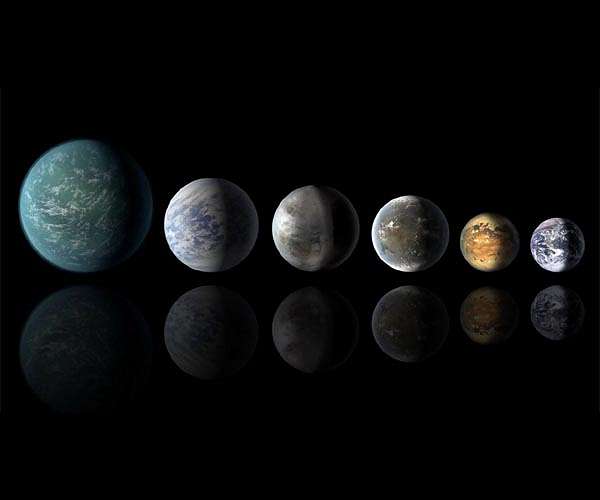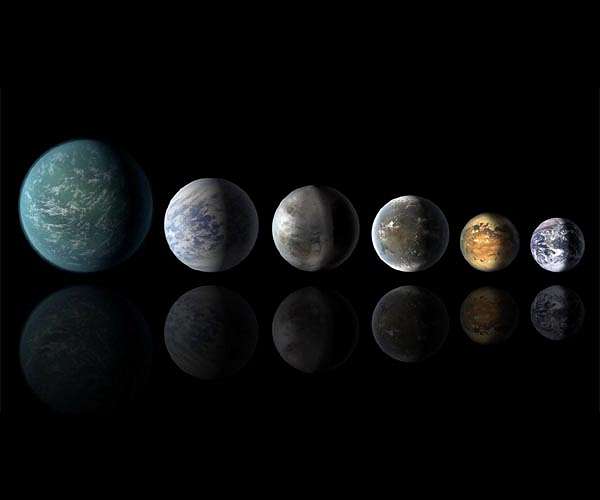
New astrobiology research predicts life ‘as we don’t know it’ (Image Credit: SNN)
The search for alien life has been restricted to using life on Earth as the reference, essentially looking for “life as we know it” beyond Earth. For astrobiologists looking for life on other planets, there are simply no tools for predicting the features of “life as we don’t know it.”
In new research published in the Proceedings of the National Academy of Sciences (PNAS), a team of scientists has tackled this restriction by identifying universal patterns in the chemistry of life that do not appear to depend on specific molecules. These findings provide a new opportunity for predicting features of alien life with different biochemistry to Earth life. “We want to have new tools for identifying and even predicting features of life as we don’t know it,” says co-author Sara Imari Walker of Arizona State University. “To do so, we are aiming to identify the universal laws that should apply to any biochemical system. This includes developing quantitative theory for the origins of life, and using theory and statistics to guide our search for life on other planets.”
On Earth, life emerges from the interplay of hundreds of chemical compounds and reactions. Some of these compounds and reactions are found across all organisms, creating a universally shared biochemistry for all life on Earth. This notion of universality, though, is specific to known biochemistry and does not allow for predictions about examples not yet observed.
“We are not just the molecules that are part of our bodies; we, as living things, are an emergent property of the interactions of the many molecules we are made of,” says Walker, who is an associate professor at ASU’s School of Earth and Space Exploration and School of Complex Adaptive Systems and the deputy director of ASU’s Beyond Center. “What our work is doing is aiming to develop ways of turning that philosophical insight into testable scientific hypotheses.”
Lead author Dylan Gagler, who graduated from ASU in 2020 with his master’s degree and is now a bioinformatics analyst at New York University Langone Medical Center in Manhattan, said he became interested in universal biology out of a desire to better understand the phenomenon of life. “It’s a surprisingly difficult concept to pin down,” he says. “As far as I can tell, life is ultimately a biochemical process, so I wanted to explore what life is doing at that level.”
Gagler and Walker ultimately decided that enzymes, as the functional drivers of biochemistry, were a good way to approach this concept. Using the Integrated Microbial Genomes and Microbiomes database, they, together with their collaborators, were able to investigate the enzymatic makeup of bacteria, archaea and eukarya, and thereby capture the majority of Earth’s biochemistry.
Through this approach, the team was able to discover a new kind of biochemical universality by identifying statistical patterns in the biochemical function of enzymes shared across the tree of life. In so doing, they verified that statistical patterns originated from functional principles that cannot be explained by the common set of enzyme functions used by all known life, and identified scaling relationships associated with general types of functions.
“We identified this new kind of biochemical universality from the large-scale statistical patterns of biochemistry and found they are more generalizable to unknown forms of life compared to the traditional one decribed by the specific molecules and reactions that are common to all life on Earth,” explains co-author Hyunju Kim, an assistant research professor at ASU’s School of Earth and Space Exploration and ASU’s Beyond Center. “This discovery enables us to develop a new theory for the general rules of life, which can guide us in the search for novel examples of life.”
“We might expect these results to hold anywhere in the universe, and that’s an exciting possibility that motivates a lot of interesting work ahead,” says co-author Chris Kempes of the Santa Fe Institute.
Additional authors on this study are Bradley Karas, John Malloy and Veronica Mierzejewski of ASU’s School of Earth and Space Exploration; and Aaron Goldman of Oberlin College and the Blue Marble Space Institute for Science.
– Advertisement –






